
7. Circle of Dreams
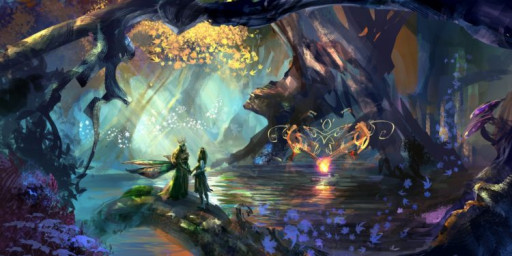
Strengths: This subclass is great at support, especially if their allies are always managing to lose hit points. The gifted power of the fey, will provide them with the ability to heal and even give a few bonus Dexterity and Wisdom points.
Choose the Circle of Dreams if…
- You want to make friends with the fey and use the Blessings of the Summer Court to your advantage. Blessings of the Summer Court will let you use a bonus action to pick an ally and give them some additional hit points based on a roll. The ability Healing Word will also become available for use, which is a great spell to learn so early in the game. You’ll be able to help reckless or unlucky players stay alive.
- The Hearth of Moonlight and Shadow is a skill given at level six, with this you borrow the power of the fey from the Glamoring Court during a rest. You can create a thirty foot bubble and each member that seeks shelter in it will gain five bonus points in Dexterity and Wisdom. But, someone will still have to keep watch for enemies, the magical sphere isn’t impenetrable and enemies can still cause trouble.
- At level ten you’ll gain the power of the Hidden Paths. This allows you to teleport sixty feet in front of you. You can also teleport another person thirty feet. This can be used in battle when trying to evade enemies, or in social situations you want to nope out of.
- At level fourteen you’ll gain the Dream Walker ability, this will allow you to travel through the dreams of others. There’s not much to this skill except maybe stealing information or giving others nightmares. Dream, Scrying, or Teleportation can be used without using up a spell slot. Being able to use the Teleportation spell at will is the best of the three. You can disappear from deadly dungeons, prisons, regretful romantic encounters, and teleport yourself to the last place you had a long rest.
Circle of Dreams Details: http://dnd5e.wikidot.com/druid:dreams
6. Circle of Land
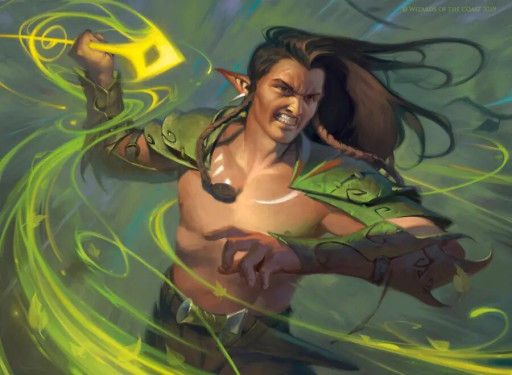
Druids in the Circle of Land have a connection to nature and the environment where they first became a druid. A druid in this circle is more likely to play a support role and they don’t really want to cause harm to the natural creatures around them.
Strengths: They are given an extra cantrip and some extra spells right away. Creatures of the natural world are hesitant to attack them. Recovering more spell slots during a short rest is also highly useful.
Choose the Circle of Land if…
- You get a bonus cantrip for joining this circle. At level two, you’ll be able to use Natural Recovery to regain energy and can recover spell spots during a short rest.
- The Circle Spells for this subclass will require you to create a bit of backstory, you must decide what kind of environment your character was in when they became a druid. The choices are, arctic, coast, desert, forest, grassland, mountain, swamp, underdark Once you know where your druid came from, then at levels three, five, seven, and nine, you gain access to a unique set of spells that will not take up your spell slots.
- At level six you gain the Land’s Stride ability, this allows you to pass through plants without getting hurt. You are also given an advantage in saving throws against magically created plants.
- At level fourteen, you gain the Nature Sanctuary skill. If a member of your party decides to pick a fight with the wildlife and you have this skill, you’ll be at an advantage. The animals and creatures of the forest can sense your connection to nature and won’t really want to hurt you, but they’ll still attack Any creature that has you as its target must make a Wisdom saving throw to determine if their attack is a hit or miss.
Circle of the Land Details: http://dnd5e.wikidot.com/druid:land
5. Circle of the Moon
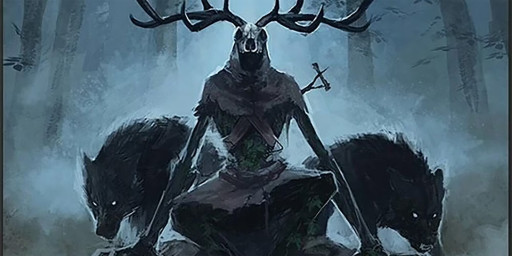
Strengths: You gain extra hit points while in your Wild Shape and you are given more creatures to change into than other druids. Natural weapons in your wild shape become magical and as you increase in level you can change into an elemental and adapt to better accommodate your needs.
Choose the Circle of the Moon if…
- At level two you get the Combat Wild Shape skill and Circle Forms. You can use Wild Shape as a bonus action, while in Wild Shape, you can regain hit points as a bonus action by sacrificing a spell slot. The use of Circle Forms will allow you to have more options, you can transform into an animal with a challenge rating of 1.
- At level six, with the Primal Strike ability, all of your attacks while in Wild Shape count as magical weapons.
- At level ten you can transform into an elemental, but in order to do so you must sacrifice two Wild Shape uses. Since elementals are quite powerful, using two of your Wild Shape opportunities is a good exchange.
- At level fourteen you gain the Thousand Forms skills, this skill allows you to change your appearance with the Alter Self spell. This spell gives you three options: aquatic adaptation, change appearance, and natural weapons. Aquatic adaptation will do exactly as it says, you can adapt to an underwater environment with the great perk of breathing underwater. Changing appearance is more useful for social situations because this lets you change how you look, you can make yourself taller, shorter, even make yourself to appear to be a different race but keep in mind, none of your stats changes. Natural weapons will allow you to grow out your teeth, horns, claws, anything that can be used as a natural weapon which is magic.
Circle of the Moon Details: http://dnd5e.wikidot.com/druid:moon
4. Circle of Stars
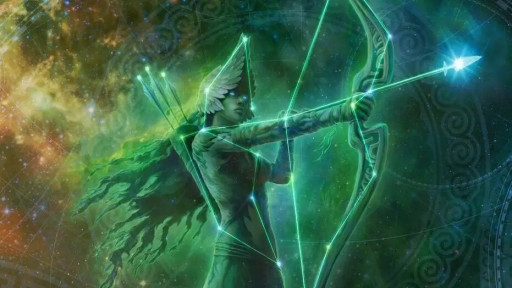
The Circle of the Stars are for the druids who look up at the night sky and can see all sorts of possibilities the future has of them. There’s a lot of power in the cosmos, and Star Druids are able to harness that power.
Strengths: In the Circle of Stars you gain a Starry Form in addition to your Wild Shape, which can give you a variety of advantages over your enemies. At the start you gain an excellent cantrip and a powerful spell. As you level up you’ll become resistant to many melee attacks.
Choose the Circle of the Stars if…
- At level two you’ll have a star map that can be everything from a scroll to a glass disk. How do you choose which of the eight types of map you want, well, a quick roll of the d6 can tell you. The star map comes with some highly useful skills, You gain the Guidance cantrip, which is very helpful for ability checks. You get the Guiding Bolt spell, which will not take up a spell slot and is always ready to be used.
- All druids have a Wild Shape, but those in the Circle of Star gain a Starry Form that allows them to have an Archer, a Chalice, or a Dragon constellation appear on your body. While in your Starry Form, you become a walking glowstick with a ten foot radius of light. If you pick the Archer, you can make a ranged spell attack as a bonus action and will cause radiant damage. The Chalice activates after you use a spell slot to heal, then you or a buddy within thirty of you can gain more hit points based on a 1d8 added to your Wisdom modifier. The Dragon constellation will give you an advantage in Intelligence/Wisdom Saving Throw or a Constitution Saving throw, anything you roll below the number nine automatically becomes a ten.
- At level six you gain access to a Cosmic Omen. During a rest you can roll a die to determine what effect will take place between now and the next long rest. If you roll an even number, you get a Weal effect, which benefits your attackers. If an enemy has to make an attack roll, a saving throw, or an ability check, you roll a d6 and add that to the total. However, if you use Cosmic Omen and roll an odd number, you get the Woe effect, which does the same thing as Weal except instead of addition it will subtract.
- At level ten you’ll have control over all of your Starry Forms. This means at the start of your turn, you can change your Starry Form as you please. Each skill from your Starry Form gains an increase in power at this level.
- At level fourteen you become resistant to piercing, slashing, and bludgeoning, damage but only while you’re in your Starry Form.
Circle of the Stars Details: http://dnd5e.wikidot.com/druid:stars
3. Circle of the Shepherd
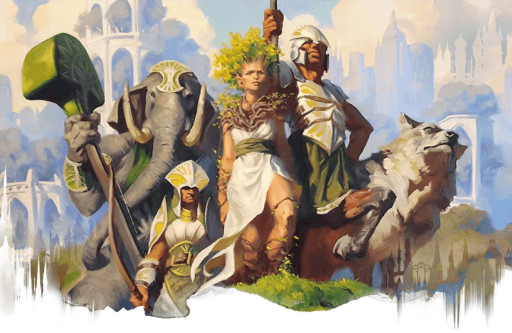
The Circle of the Shepherd is tightly connected to not only the fey but the creatures of nature as well. They have a desire to protect the natural world around them and keep the creatures of the world safe from harm. They are friends with the natural world. This is a fantastic subclass to pick for their support skills
Strengths: Being able to talk to the wildlife is a great strength. The animals can warn you about potential threats you may encounter or you can use them to gather important information. Shepherd Druids may not be the best at combat themselves, but they are exceptional in their summoning skills and having those creatures fight for them and their team.
Choose the Circle of the Shepherd if…
- You can talk to animals and fey, listen in on all the good gossip and gather information.
- At level two you gain the ability to use a Spirit Totem. As a bonus action you can summon a spirit that will linger around you for a minute. If you choose bear, you and your allies gain five hit points plus your druid level and an advantage on strength, saving and check throws. The hawk gives you better eyesight, when you are attacked you can react with another attack with advantage. The unicorn will give you and your friends advantage on ability checks and if you heal someone, each ally gains hit points equal to your druid level.
- You become a Mighty Summoner at level six, if you are to summon a fey or a creature, they gain a few extra perks. They gain extra hit points, and who doesn’t love those. The second perk is that their natural weapons become magical weapons.
- At level ten your Spirit Totem and your summoned creatures gain the ability to work together with the Guardian Spirit skill. Any creature you have summoned that is within the aura of your Spirit Totem will regain the number of hit points equal to half of your druid level whenever it ends its turn. This skill makes you a highly valuable member of the team, especially in battle.
- At level fourteen, you gain the Faithful Summons ability. If you are at zero hit points you will gain the benefits of Conjure Animals. You’ll summon four animals that will protect you from further harm. You can even summon them if you’re incapacitated.
Circle of the Shephard Details: http://dnd5e.wikidot.com/druid:shepherd
2. Circle of Wildfire

Strengths: This is a very versatile class, you can play the support role or lead the party into battle. Those that walk this circle are not alone, and gain the companionship of a wildfire spirit.
Choose Circle of the Wildfire Spirit if…
- You want to gain a wildfire spirit companion that can take any form that you desire. The cost of summoning your new buddy is one Wild Shape usage. The moment your wildfire spirit takes the stage anyone within ten feet of you must make a Dexterity saving throw, which if failed, will cause fire damage.
- Show off the Enhanced Bond you have with your wildfire spirit at level six. This can only be used when your wildfire spirit is in play. If you cast a fire spell or a healing spell then you’ll be given bonuses with the use of a d8. Another nice little prize of reaching level six, is you can have spells originate from your wildfire spirit.
- Cauterizing Flames is truly the skill that shows how versatile the Wildfire Druid can be. This is a reaction based skill that can be used for either attacking or healing purposes. It can be used to knock out a few enemies quickly then heal up your party when they start to fizzle out. A 2d10 plus your Wisdom modifier will determine either how much healing is done or how much damage you’ve caused.
- Death is no longer an issue when you hit level fourteen and have access to the Blazing Revival skill. If you have zero hit points your wildfire spirit can sacrifice themself on your behalf. You’ll come back with only half your hit points which is a lot better than zero.
Circle of Wildfire Details: http://dnd5e.wikidot.com/druid:wildfire
1. Circle of Spores
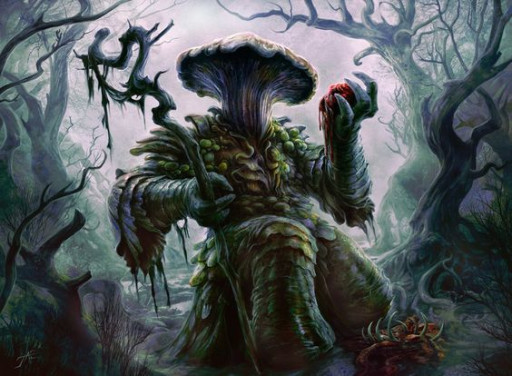
Druids who join the Circle of Spores are walking allergens, they infect others with their poisons. This is the circle for those druids who don’t mind getting a little dirty from digging through graves. Other druids may focus on the beauty of life and nature and the strength of its health, but Spore Druids understand that death doesn’t mean the end of life. The power of the Spore Druid is highly underrated but if used with the right strategy can easily become the most dangerous of the subclasses.
Strengths: They have toxic spores that move around and inside them and they probably don’t make the best meal for an angry creature. Their spores are so powerful they can animate dead creatures and use them. They are also excellent in battle without having to use their Wild Shape.
Choose the Circle of Spores if…
- At level two you gain the cantrip, Chill Touch, which causes necrotic damage on an enemy. Then at levels three, five, seven, and nine, you gain additional spells from your circle. These spells are always prepared and do not cost anything to cast them.
- You are given a Halo of Spores to use as a reaction. These spores cause necrotic damage when a creature is within ten feet of you and they fail a Constitution Saving Throw. Your spores are given the ability of Symbiotic Entity that is triggered by the sacrifice of one of your Wild Shape usages. This will give you an extra four temporary hit points per level. When you use your Halo of Spores to attack, you roll for damage twice and add the two. Use of your melee weapons will deal an extra 1d6 of necrotic damage in addition to whatever type of physical damage they cause.
- At level six you can animate a corpse with Fungal Infestation. This works for small or medium creatures which will then gain the stats of Zombie. The Zombie will attack after you in battle.
- At level ten, you can spread your spores. If you’re using Symbiotic Entity, you can throw spores up to thirty feet away for a minute as a bonus action. The spores will create a radius of ten feet of toxins wherever they land. A downside of this, is you won’t be able to use your Halo of Spores as long as this skill is in play.
- At level fourteen you gain Fungal Body. You can not be blinded, deafened, fighted, or poisoned, and any critical hit against you turns normal. This skill has to be one of the best offered in any druid circle and with it you can stay in battle without worrying about certain negative effects.
Circle of Spores Details:http://dnd5e.wikidot.com/druid:spores
You may also be interested in:
- The Best D&D Classes (Ranked from Worst to Best)
- Top 25 Best D&D Villains of All Time
- 32 Most Interesting Facts About Dungeons and Dragons!
- 25 Best D&D Games for PC That Every Fan Must Play!
- The 10 Best DnD Streams
- Most Powerful D&D Dragons For Adventurers To Defeat
- Top 10 Best DnD Campaign Ideas
- Top 5 DnD Most Useful Languages
- D&D Top 10 Most Damaging Spells That Obliterate Foes
